The Aegis Combat System has been put through its paces in a recent missile defence trial involving a simulated hypersonic medium-range ballistic missile (MRBM), according to Lockheed Martin and U.S. defence officials.
The test, known as Flight Test Other-40 (FTX-40) or “Stellar Banshee”, was carried out near Kauai, Hawaii, aboard the USS Pinckney (DDG 91). It formed part of a wider collaboration between the U.S. Navy, Missile Defense Agency, Lockheed Martin and other defence industry partners.
While the engagement involved a simulated interceptor—the SM-6 Block IAU—the Aegis system detected, tracked, and processed the hypersonic target in real time, testing the software’s ability to respond to high-speed threats. According to Lockheed Martin, the system ran its latest software in a virtualised configuration, marking the first use of this setup during a ballistic missile defence (BMD) flight test.
“Our Aegis Combat System successfully defended against a simulated hypersonic threat,” said Chandra Marshall, Vice President of Multi-Domain Combat Solutions at Lockheed Martin. She described the result as a demonstration of Aegis Baseline 9’s developing capability to respond to emerging missile threats.
The trial highlights the continued development of sea-based missile defence systems as the U.S. and its allies look to address increasingly advanced missile technologies, including hypersonic glide vehicles and manoeuvring warheads.
FTX-40 is part of the Capability Package 24 / BMD 5.1.5 series of tests, which also includes the Sea-Based Terminal Increment 3 upgrade. It follows a similar event last year—FTX-23, also known as Stellar Sisyphus—which tested sensor-tracking and communications-link performance.


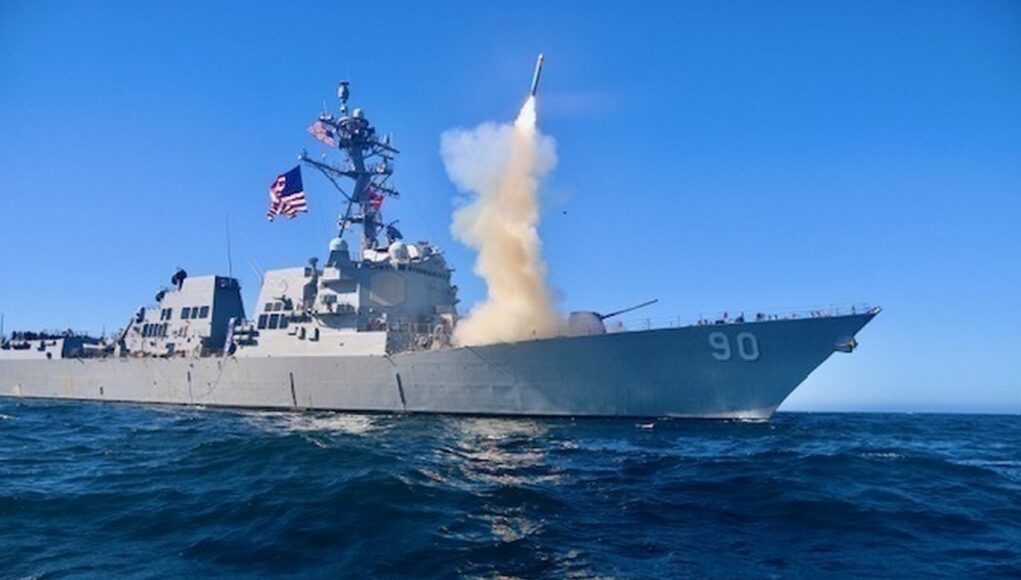
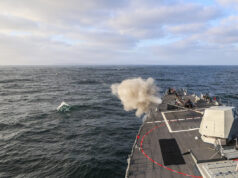
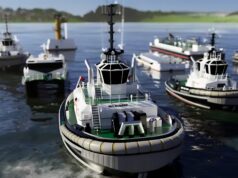
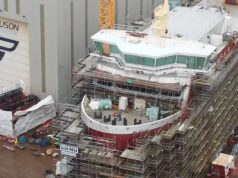
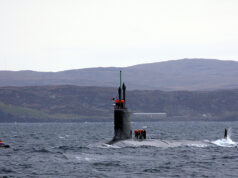
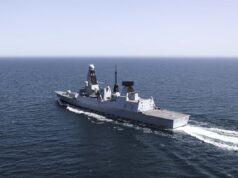

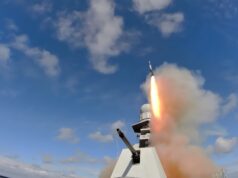
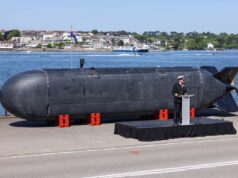
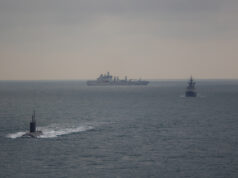
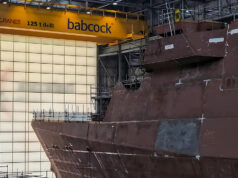

Can the RN do this? If not, what is the R&D route to tracking MR hypersonic missiles and engaging them? Does anyone know?
The Aster-30 Block 1NT, the intended next step in the Sea Viper Evolution programme, is marketed by MBDA as being able to intercept so-called ‘first generation’ hypersonic missiles – eg, those derived from ballistic missiles. This is likely due to the similarities between their trajectories and behaviours, and those of conventional ballistic missiles that the Aster-30 Block 1NT is designed to intercept.
The Aster-30 Block 1, that the Type 45 is currently being upgraded to receive, is not marketed by MBDA as having this counter-hypersonic capability. However, I’d imagine that a Type 45 under hypersonic attack defending with the Block 1 would not be defenceless.
Additionally (because the edit function has disappeared?), the Aster-30 Block 1NT is generally agreed to have a terminal phase interception capability equal to that of the SM-6. If SM-6 is what these AEGIS ships are using, it’s another point in favour of the Aster-30 Block 1NT being a credible terminal phase hypersonic defence.
I am making a good salary from home $4580-$5240/week , which is amazing under a year ago I was jobless in a horrible economy. I thank God every day I was blessed with these instructions and now its my duty to pay it forward and share it with Everyone,
Here is I started_______ 𝐖𝐖𝐖.𝐖𝐎𝐑𝐊𝐒𝐓𝐀𝐑𝟏.𝐂𝐎𝐌
JOIN US Everybody can earn 250/h Dollar + daily 1K… You can earn from 6000-12000 Dollar a month or even more if you work as a part time job…It’s easy, just follow instructions on this page, read it carefully from start to finish… It’s a flexible job but a good eaning opportunity..go to this site home tab for more detail thank you……..
COPY AND OPEN →→→→ 𝐖𝐖𝐖.𝐇𝐈𝐆𝐇𝐏𝐑𝐎𝐅𝐈𝐓𝟏.𝐂𝐎𝐌
The USN missile of choice for endoatmosheric (within the atmosphere) interceptions of hypersonic threats is the SM6. However, the USN are also looking at the Patriot PAC3 MSE to replace SM2 as the next layer down. As this missile has been combat proven against both Iskander-M (Kinzhal) and Zircon which are classed as hypersonic weapons.
Information that Russia’s Kinzhal and Tsirkon hypersonic missiles have been intercepted is fake information, published by Ukraine propaganda. here is no currently known defense system that intercept maneuverable hypersonic missiles, except for the Russian S500 air defense system.
Longer, intermediate and medium range ballistic missiles were always hypersonic, weren’t they? Even some SRBM managed Mach 5. When “hypersonic” became a thing it was referring to the new threat of hypersonic cruise. As far as I can figure, talking about hypersonic MRBMs just means talking about MRBMs. Those are about 1000km to 3000km in US parlance.
Can RN destroyers do this now? No.
The UK has followed the same route as the French and Italians, using Asters, and the next step for the UK is the Sea Viper Evolution programme, which will upgrade the current Aster 30 Block 0. Unfortunately I’m uncertain to what. It’s said that we are getting Aster 30 Block 1, which probably can’t take down a MRBM as I defined it above: it’s advertised as taking out ballistic missiles in the 600km range. The Aster 30 Bk1 NT is imminent (already tested and scheduled for deployment in ground-based SAMP/T) and that can take out some MRBMs, advertised to the 1500km range. In the longer term, Aster 30 Bk 2 will have the ability to strike all MRBMs, but I have no dates on that. Next decade probably.
It seems incongruous that as the French and Italians upgrade to Block 1NT, we are upgrading only to Block 1. Nevertheless, even as recently as earlier this month, Navy Lookout was still talking about us upgrading to Block 1. Aster has been in the headlines, with factory optimisation and enhanced speed of build made available in France and Italy, also an order of over 200 new missiles, for them and the UK. Who is getting which Aster has not been in the press, we just know it’s a mix, so might we get A30 1NTs? I highly doubt it, but I can’t say for certain.
The volume radar on the T45 (S1850M) can detect balistic missiles, but it’s not optimised for it. Once again there’s a clear route here. the radar was developed from the SMART-L radar which already has an enhancement for balistic missiles as the SMART-L MM/N, and the manufacturer, Thales NL, say the upgrade will work on the S1850M. I’ve heard of no plans to do this even though the T45 radars are being refreshed, it looks like we aren’t taking the opportunity for this upgrade path. SAMPSON has also been tweaked to give it some ballistic missile tracking capability, but as far as I know, which class of missiles it can track isn’t openly shared.
There is another unlikely second possible route to us having the interceptor capability which comes with the Type 26s. These will have Mk 41 VLS, and nobody is certain what will go in them other than FC/ASW. We might choose to integerate SM-6 or even SM-3. Artisan is the wrong radar for this, but linked to a longer range sensor off the ship, it’s possible. Around 4 years ago a Durch ship tracked a ballistic missile using SMART-L MM/N, succesfully cueing a SM-3 missile on an US Aegis system.
In the ABM stakes, we are a long way behind the US, and significantly behind other European countries too.
I think you are missing how the SAMPSON and 1850 data can be fused to produce a single picture.
RN has 8 deployable 1850 sets on T45 and QECs.
I suspect that a 1850 upgrade is on the cards as it is recognised that T45 is the only ABM platform UK possesses and so is both politically and militarily highly valuable.
My belief is that this program will be given a very high funding priority as the costs of upgrading the 1850 electronics will be close to fixed price. The issue is integrating that into BAE CMS. But…..my *instinct* tells me that this has already been done maybe on the stone T45.
by “the stone T45”, do you mean the T45 radars on top of Portsdown hill?
The Aster-30 Block 1NT, the intended next step in the Sea Viper Evolution programme, is marketed by MBDA as being able to intercept so-called ‘first generation’ hypersonic missiles – eg, those derived from ballistic missiles. This is likely due to the similarities between their trajectories and behaviours, and those of conventional ballistic missiles that the Aster-30 Block 1NT is designed to intercept.
The Aster-30 Block 1, that the Type 45 is currently being upgraded to receive, is not marketed by MBDA as having this counter-hypersonic capability. However, I’d imagine that a Type 45 under hypersonic attack defending with the Block 1 would not be defenceless.
As to Aster-30 Block 2, it’s widely believed that that project has ended – in fact, it barely ever got off the ground. It was essentially a marketing proposition from MBDA, and after no money was thrown its way, it was replaced in its role by the Aster-30 Block 1NT. The closest thing to a dedicated endoatmospheric terminal phase interceptor for hypersonic and ballistic missiles, in the same vein as the Aster-30 Block 2, is the upcoming Aquila interceptor, which is a pan-European effort (though not including the UK). Aquila aims to intercept in a window off around 25-50km (IIRC), meaning that it essentially covers the next altitude bracket up from the Aster-30 Block 1NT.
As to the idea that Type 26 might carry the Standard series ballistic interceptors, it seems unlikely given the economic clout needed to get a CEC network up and running in the RN. Furthermore, the only missile likely to be purchased to fire from those Mk41 would be the SM-3. SM-6 is essentially unnecessary as the Aster-30 Block 1NT gives equivalent capability against terminal-phase ballistic missiles.
CEC is ultimately just a low latency network connection.
That can be achieved in a lot of ways better than the USN CEC. I belief is that RN did well to swerve going down that route TBH as they can now focus on better battle space management software and networking rather than increasingly working round parts of a dated system.
I found a good article in UKDJ from 2021. I don’t think anything has changed for the RN in the last four years. Hopefully the next four years will see more progress. ukdefencejournal.org.uk/ballistic-missile-defence-and-the-type-45-destroyer
Can’t speak for the RN but the RAN’s Hobart destroyers test fired SM 6 missiles in August 2024 and are part way through the process of upgrading to the latest Aegis version baseline 9 which will keep them in lock step with the USN and means Australia will have the same hypersonic and ABM interception capability demonstrated here.
Might lack ultimate mass (but then don’t we all) but I have to say Australia does have some very good kit.
The 6 Hunter Class will have at least 32 VLS capable of launching the same range of weapons as the 3 Hobarts including SM6.
There is a proposal by BAE to reduce the size of the multi-mission module and insert 64 VLS cells (plus increase the NSM canister launchers from 8 to 16) taking the total number of strike length VLS cells to 96. The top weight allowance of around 100+ tonnes for the mission module is about the same as the 64 cell VLS insert (based on 64 Tomahawks as the heaviest in service RAN weapon with the SM6 being considerably lighter).
Given the recent circumnavigation of the Australian continent by a Chinese naval task force (including their latest cruiser size ‘destroyer’) his variant is looking increasingly likely to increase RANs magazine depth to match the PLAN ships.
The Hunters share the Aegis combat system but have CEAFAR radars in place of the Lockheed Martin radars used in the Arleigh Burke and other AEGIS ships. It is unclear if CEAFAR can provide the same quality target track for incoming hypersonic or ballistic missiles but the Aegis combat system does provide cooperative engagement capability (CEC) for the Hunters which mean the Hobarts can hand off target tracks to the Hunters.
There will be no lack of critical mass for the RAN – ultimately it may rival the RN but in the meantime Australia is likely to field this capability before the UK.
If we are talking about the latest Flight 3 Arleigh Burkes with the SPY-6. Then no CEFAR is not really comparable. The main difference is the area of a single SPY-6 array. With CEFAR they are talking about combining the adjacent arrays to form a greater array. But this really only works between two adjacent arrays to increase the effective radiated power for a single projected beam. Even then the SPY-6 array is much bigger in area. But with CEFAR being smaller individually, it does mean you can mount them higher up. However, I think they are missing the point. For L/S band radar that are doing volume search as well as looking for objects in low earth orbit. It doesn’t matter how high the array is mounted on the ship. The main issue is the area of the array. As that governs the power output and its receiver sensitivity. Plus you can mount a X-band much higher up due to it being much smaller (lighter), just to look at the horizon and the sea in-between it and the ship. As it will give you inherently better clarity of targets approaching the ship. SPY-6 on the Flight 3 Arleigh Burkes will ultimately have a greater detection range than CEFAR. Though the SPY-6 fitted to the Flight 2s has to be smaller in area, as the radar is much heavier than the previous SPY-1D, as these ships can’t handle the increased top weight.
Has a hypersonic missile hit a moving target? Have asked this before but think the answer is above most people’s pay grade.
thats the million dollar question. i dont see how a seeker could look through the plasma.
There are a lot of factors that determines whether an object going hypersonically generates a plasma around it. Generally objects travelling less than Mach 8 don’t generate a significant plasma. They may develop it around the nose area, a lot depends on the shape of the object.
Sampson isn’t suitable for targets this fast. You need a fixed panel staring radar to get the refresh rate down. There is a reason why every other navy on earth is buying them.
exactly. thats the biggest issue i see with the t-45 trying to target hypersonics.
SAMPSON is perfectly capable.
However, I’d see T83 as using all three technologies together.
– son of SAMPSON for skimmers abd a few other bits
– son of 1850 for volume search
– flat panel for locking onto high speed targets
Precisely Chris. UK is not serious in this.
BZ to the integrated test team upon confirmation of demonstrably real, if measured, forward progress in the program. 👍 Certainly occuring not a moment too soon, given ChiCom hypersonics progress.
and MRBMs, in general.
I am always dubious of simulated tests where there is not a missile intercepting another in real life.
Agreed, it depends on how robust the models that are being used along with the fidelity of the data to construct the scenario. I’d say this is the step that gives you the warm and fuzzy feeling before you go to physical test. making sure the ship is ready for the physical testing.
JOIN US Everybody can earn 250/h Dollar + daily 1K… You can earn from 6000-12000 Dollar a month or even more if you work as a part time job…It’s easy, just follow instructions on this page, read it carefully from start to finish… It’s a flexible job but a good eaning opportunity..go to this site home tab for more detail thank you…….
COPY AND OPEN →→→→ 𝐖𝐖𝐖.𝐇𝐈𝐆𝐇𝐏𝐑𝐎𝐅𝐈𝐓𝟏.𝐂𝐎𝐌